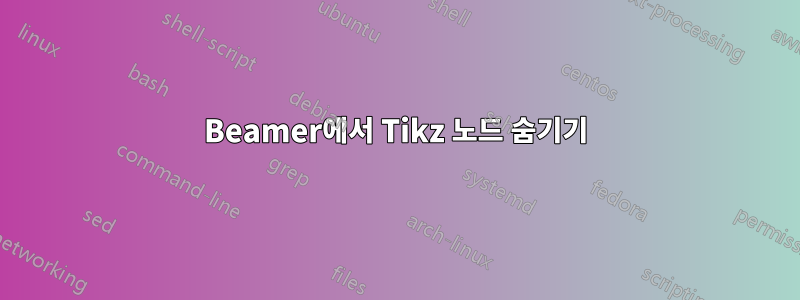
Tikz프레젠테이션 용 순서도를 만드는 데 사용하고 있습니다 Beamer. Beamer플로우샤트의 각 항목을 하나씩 찾아낼 수 있었지만 노드 하나를 표시한 다음 숨길 수 있었으면 좋겠습니다. 이를 수행할 수 있는 방법이 있습니까?
내 코드는 다음과 같습니다.
\begin{frame}{The Detection Method}
\tikzstyle{LargeBlock} = [rectangle, draw, fill=blue!20, text width=10em, text badly centered, rounded corners]
\tikzstyle{decision} = [diamond, draw, fill=red!20, text badly centered,text width=1.2cm]
\tikzstyle{block} = [rectangle, draw, fill=blue!20, text width=5em, text badly centered, rounded corners, minimum height=1em]
\tikzstyle{ImgBlock} = [rectangle, draw]
\tikzstyle{line} = [draw, -latex']
\tikzstyle{cloud} = [draw, ellipse,fill=red!20, minimum height=1em]
\tikzstyle{EmptyAnchor} = [ellipse,minimum height=1em]
\begin{tikzpicture}[node distance = 1cm, auto]
\pause{}
% Step 1
\node [LargeBlock, anchor=north] (init) {Simulated Planet + Star CCFs};\pause{}
% Step 2
\node [decision, right=1 cm of init] (build) {$\sum CCFs$};
\path [line] (init) -- (build); \pause{}
% Step 3
\node [block, below=0.5 cm of build] (template) {Star Template};
\path [line] (build) -- (template); \pause{}
% Step 4
\node [decision, below=0.5 cm of init] (normalise) {$\frac{CCFs}{Template}$};
\path [line] (init) -- (normalise);
\path [line] (template) -- (normalise); \pause{}
% Step
\node [EmptyAnchor, below=1.5 cm of normalise] (empty0) {};
\node [EmptyAnchor, right=2.5 cm of empty0] (empty3) {};
\node [ImgBlock, right=5 cm of empty0] (img1) {{\pgftext{\includegraphics[width=4.5cm,page=6]{./figures/Jupiter_3days_EELT.pdf}}}};
\path [line,dashed] (normalise) |- (empty3); \pause{}
% Step 5
\path [line] (init) -- (build);
\node [LargeBlock, below=0.5 cm of normalise] (NormCCFs) {Normalized CCFs};
\path [line] (normalise) -- (NormCCFs); \pause{}
% Step 6
\node [decision, below=0.5 cm of NormCCFs] (stack) {$stack$ $CCFs$};
\node [EmptyAnchor, below=0.5 cm of NormCCFs] (empty1) {};
\path [line] (NormCCFs) -- node[color=red]{Correct Planet RV} (stack); \pause{}
% Step 7
\node [EmptyAnchor, right=2 cm of stack] (empty2) {};
\node [ImgBlock, right=5 cm of empty1] (stop) {{\pgftext{\includegraphics[width=4.5cm,page=8]{./figures/Jupiter_3days_EELT.pdf}}}};
\path [line,dashed] (stack) -- (empty2);
\end{tikzpicture}
\end{frame}
나는 노드를 원한다(img1)노드가 나타나면 나타났다가 사라지게 됩니다.(NormCCF)나타납니다.
받는 사람이 있나요?
답변1
\node오버레이를 인식 한다는 사실을 활용하여 \path원하는 슬라이드에 요소를 표시할 수 있습니다.
\PassOptionsToPackage{demo}{graphicx}
\documentclass{beamer}
\usepackage{tikz}
\usetikzlibrary{shapes.geometric,positioning,arrows}
\begin{document}
\begin{frame}{The Detection Method}
\tikzstyle{LargeBlock} = [rectangle, draw, fill=blue!20, text width=10em, text badly centered, rounded corners]
\tikzstyle{decision} = [diamond, draw, fill=red!20, text badly centered,text width=1.2cm]
\tikzstyle{block} = [rectangle, draw, fill=blue!20, text width=5em, text badly centered, rounded corners, minimum height=1em]
\tikzstyle{ImgBlock} = [rectangle, draw]
\tikzstyle{line} = [draw, -latex']
\tikzstyle{cloud} = [draw, ellipse,fill=red!20, minimum height=1em]
\tikzstyle{EmptyAnchor} = [ellipse,minimum height=1em]
\begin{tikzpicture}[node distance = 1cm, auto]
\pause{}
% Step 1
\node [LargeBlock, anchor=north] (init) {Simulated Planet + Star CCFs};\pause{}
% Step 2
\node [decision, right=1 cm of init] (build) {$\sum CCFs$};
\path [line] (init) -- (build); \pause{}
% Step 3
\node [block, below=0.5 cm of build] (template) {Star Template};
\path [line] (build) -- (template); \pause{}
% Step 4
\node [decision, below=0.5 cm of init] (normalise) {$\frac{CCFs}{Template}$};
\path [line] (init) -- (normalise);
\path [line] (template) -- (normalise); \pause{}
% Step
\node [EmptyAnchor, below=1.5 cm of normalise] (empty0) {};
\node [EmptyAnchor, right=2.5 cm of empty0] (empty3) {};
\node<6> [ImgBlock, right=5 cm of empty0] (img1) {{\pgftext{\includegraphics[width=4.5cm,page=6]{./figures/Jupiter_3days_EELT.pdf}}}};
\path<6> [line,dashed] (normalise) |- (empty3); \pause{}
% Step 5
\path [line] (init) -- (build);
\node [LargeBlock, below=0.5 cm of normalise] (NormCCFs) {Normalized CCFs};
\path [line] (normalise) -- (NormCCFs); \pause{}
% Step 6
\node [decision, below=0.5 cm of NormCCFs] (stack) {$stack$ $CCFs$};
\node [EmptyAnchor, below=0.5 cm of NormCCFs] (empty1) {};
\path [line] (NormCCFs) -- node[color=red]{Correct Planet RV} (stack); \pause{}
% Step 7
\node [EmptyAnchor, right=2 cm of stack] (empty2) {};
\node [ImgBlock, right=5 cm of empty1] (stop) {{\pgftext{\includegraphics[width=4.5cm,page=8]{./figures/Jupiter_3days_EELT.pdf}}}};
\path [line,dashed] (stack) -- (empty2);
\end{tikzpicture}
\end{frame}
\end{document}

그건 그렇고, TikZ 명령이 오버레이를 인식한다는 사실을 사용하거나 \onslide<>{...}간단한 명령을 \only<...>{}사용하는 것보다 (필요한 경우) 더 나은 제어를 얻을 수 있습니다 \pause.
이제 코드는 다음과 같습니다. 그러나 \onslide사양을 사용합니다. 또한 이전 \tikzstyle 구문을 새로운 \tikzset 구문으로 대체했습니다.
\PassOptionsToPackage{demo}{graphicx}
\documentclass{beamer}
\usepackage{tikz}
\usetikzlibrary{shapes.geometric,positioning,arrows}
\begin{document}
\begin{frame}{The Detection Method}
\tikzset{
LargeBlock/.style={rectangle, draw, fill=blue!20, text width=10em, text badly centered, rounded corners},
decision/.style = {diamond, draw, fill=red!20, text badly centered,text width=1.2cm},
block/.style = {rectangle, draw, fill=blue!20, text width=5em, text badly centered, rounded corners, minimum height=1em},
ImgBlock/.style = {rectangle, draw},
line/.style = {draw, -latex'},
cloud/.style = {draw, ellipse,fill=red!20, minimum height=1em},
EmptyAnchor/.style = {ellipse,minimum height=1em}
}
\begin{tikzpicture}[node distance = 1cm, auto]
% Step 1
\node [LargeBlock, anchor=north] (init) {Simulated Planet + Star CCFs};\pause{}
% Step 2
\onslide<+->{\node [decision, right=1 cm of init] (build) {$\sum CCFs$};
\path [line] (init) -- (build);
}
% Step 3
\onslide<+->{\node [block, below=0.5 cm of build] (template) {Star Template};
\path [line] (build) -- (template);
}
% Step 4
\onslide<+->{\node [decision, below=0.5 cm of init] (normalise) {$\frac{CCFs}{Template}$};
\path [line] (init) -- (normalise);
\path [line] (template) -- (normalise);
}
\onslide<+->{\node [EmptyAnchor, below=1.5 cm of normalise] (empty0) {};
\node [EmptyAnchor, right=2.5 cm of empty0] (empty3) {};
}
\onslide<+>{\node [ImgBlock, right=5 cm of empty0] (img1) {{\pgftext{\includegraphics[width=4.5cm,page=6]{./figures/Jupiter_3days_EELT.pdf}}}};
\path [line,dashed] (normalise) |- (empty3);
}
% Step 5
\onslide<+->{\path [line] (init) -- (build);
\node [LargeBlock, below=0.5 cm of normalise] (NormCCFs) {Normalized CCFs};
\path [line] (normalise) -- (NormCCFs);
}
% Step 6
\onslide<+->{\node [decision, below=0.5 cm of NormCCFs] (stack) {$stack$ $CCFs$};
\node [EmptyAnchor, below=0.5 cm of NormCCFs] (empty1) {};
\path [line] (NormCCFs) -- node[color=red]{Correct Planet RV} (stack);
}
% Step 7
\onslide<+->{\node [EmptyAnchor, right=2 cm of stack] (empty2) {};
\node [ImgBlock, right=5 cm of empty1] (stop) {{\pgftext{\includegraphics[width=4.5cm,page=8]{./figures/Jupiter_3days_EELT.pdf}}}};
\path [line,dashed] (stack) -- (empty2);
}
\end{tikzpicture}
\end{frame}
\end{document}
라인
\PassOptionsToPackage{demo}{graphicx}
단순히 실제 이미지를 검은색 직사각형으로 대체합니다. 하다~ 아니다실제 코드에서 해당 줄을 사용하십시오.


